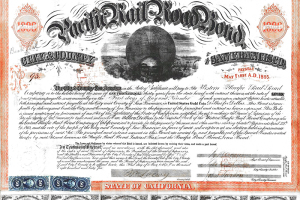We human beings are a myopic bunch when it comes to investing. It’s not our fault; we’re wired to run to safety in times of trouble. Unfortunately it causes us to worry about the day-to-day movements of the market when they have virtually no impact on things over the long-term. The market will be what it will be 30 years from now, and it will have nothing to do with what happened on a Thursday in February three decades before.
We panic in times of market turmoil and sell our stocks, thinking we’ll get back in when things improve. But we’ve already missed the ideal exit point. What do you think the odds are we buy back in at the very bottom when things look the bleakest? Not very good. This is part of the reason why the average individual investor underperforms the market by almost 4% per year, according to a study by DALBAR.
Investors have been found to have much stronger feelings of regret towards losses than joy for equivalent gains. In fact, Daniel Kahneman and Amos Tversky found in their behavioral finance research that a loss has as much as two-and-a-half times the emotional impact of a gain of the same magnitude.
Because of this aversion to loss, investor’s are often reluctant to hold stocks in times of market stress because our emotions are distorting our perspective, causing us to evaluate our decisions over inappropriately short time periods. In other words, we are narrowly framing the outcome of our investment decisions over days, weeks, and months instead of broadly framing it over our actual time horizon which is typically many years or decades.
The probability of losing money in the equity market becomes very low over periods greater than six years — historically less than 10% of the time for the S&P 500 (1950-2015) and even less for a globally diversified equity portfolio. Even with the financial crisis of 2008 and early 2009, the S&P 500 surpassed its October 2007 peak in less than six years. And for those with 30-year time horizons — like myself — the worst the S&P 500 has provided over that holding period is a four-fold return while the best has been more than twenty-fold (the average has been just over 800%). The past is no guarantee of the future, but I take comfort in those numbers.
This is why it is so important we do not let myopic loss aversion cause us to lose sight of our long-term goals in times of heightened mark
et volatility. Easier said than done, right? Our investments have lost money, so naturally we are feeling that emotional pain. It also means we are further from our retirement goals. But are we really?
Food is something we all need to buy on a regular basis, so we are typically not upset when food prices go down. Similarly, drivers are quite pleased when the price of a gallon of gas falls as it has been doing lately. Investments are also something we should buy regularly if we want a financially secure retirement. Why then are we so upset when the prices of those go down? We are thinking of investments exclusively as something we already have when most of us should be thinking of them in terms of something we need to acquire much more of.
What if we were to frame market downturns differently? What if we thought of retirement goals not as a dollar target, but instead in terms of units or shares?
Let’s say you plan to retire in 30 years and to provide the financial means necessary to meet your desired lifestyle you will need $2 million in today’s dollars — about $4.2 million in 2046 dollars if we assume 2.5% inflation. I’m not advocating this, but for the sake of keeping this simple let’s assume you are only investing in the iShares S&P 500 ETF (ticker: IVV). Now instead of thinking of your retirement goal as $4.2 million you can think of it as roughly 2,500 shares of IVV (assuming a 7.6% annual return).
Sure, it’s a moving target and it’s more complex in practice than the example I give. But when you frame your goal in terms of shares instead of dollars, you flip the field during market downturns. Instead of being so much further from reaching your dollar-value goal, it now becomes so much cheaper to reach your share-count goal. It shifts you away from panic selling and towards building long-term wealth.
And this is how I learned to stop worrying and love market crashes.






